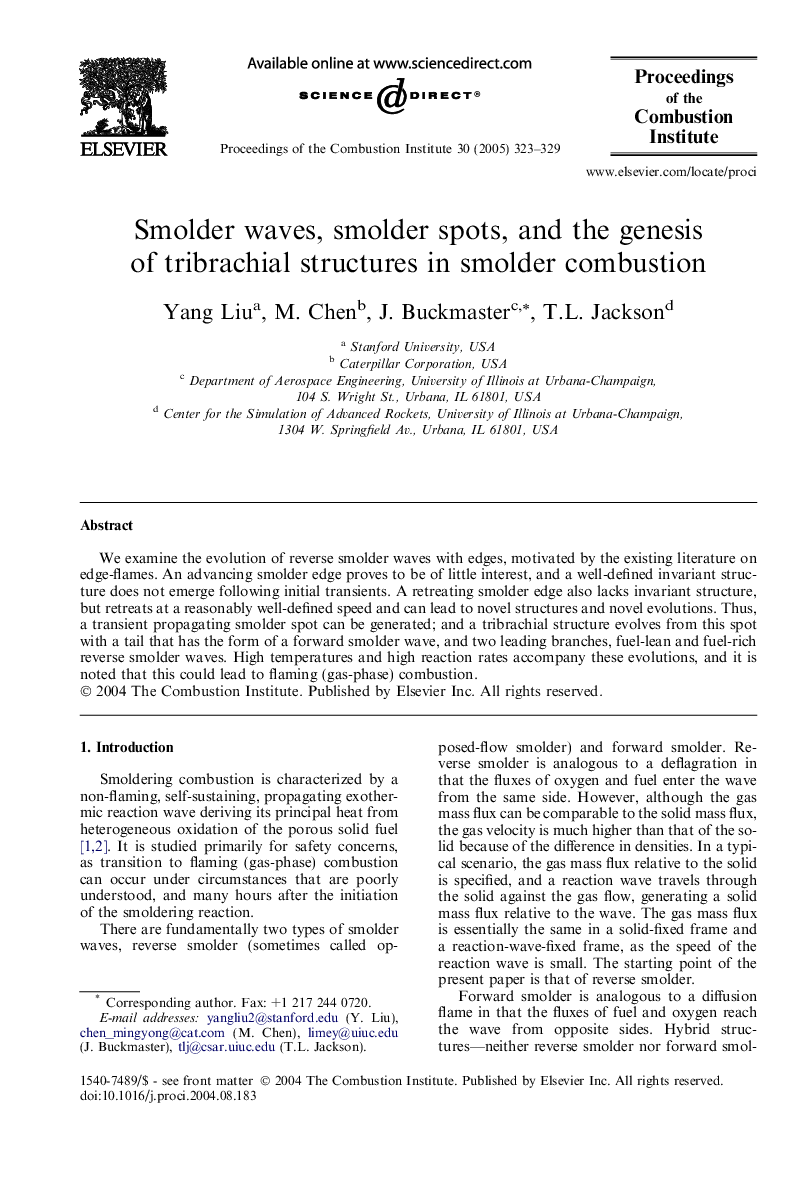| Article ID | Journal | Published Year | Pages | File Type |
|---|---|---|---|---|
| 9637350 | Proceedings of the Combustion Institute | 2005 | 7 Pages |
Abstract
We examine the evolution of reverse smolder waves with edges, motivated by the existing literature on edge-flames. An advancing smolder edge proves to be of little interest, and a well-defined invariant structure does not emerge following initial transients. A retreating smolder edge also lacks invariant structure, but retreats at a reasonably well-defined speed and can lead to novel structures and novel evolutions. Thus, a transient propagating smolder spot can be generated; and a tribrachial structure evolves from this spot with a tail that has the form of a forward smolder wave, and two leading branches, fuel-lean and fuel-rich reverse smolder waves. High temperatures and high reaction rates accompany these evolutions, and it is noted that this could lead to flaming (gas-phase) combustion.
Related Topics
Physical Sciences and Engineering
Chemical Engineering
Chemical Engineering (General)
Authors
Yang Liu, M. Chen, J. Buckmaster, T.L. Jackson,
